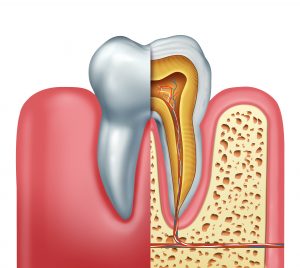 Dental decay is one of the more common concerns out there, affecting a number of individuals yearly. In its earliest stages, the damage caused by these oral bacteria can easily be managed. If you do not act with efficiency, however, the decay can spread and cause a number of concerns, from cavities, to internal infection, and even tooth loss that causes the need for an implant replacement. In today’s blog, your Cedar Rapids, IA dentist will look at the reasons why you should not ignore a cavity as well as the negative effects that occur if you do.
Dental decay is one of the more common concerns out there, affecting a number of individuals yearly. In its earliest stages, the damage caused by these oral bacteria can easily be managed. If you do not act with efficiency, however, the decay can spread and cause a number of concerns, from cavities, to internal infection, and even tooth loss that causes the need for an implant replacement. In today’s blog, your Cedar Rapids, IA dentist will look at the reasons why you should not ignore a cavity as well as the negative effects that occur if you do.
How Decay Sets In
When your smile becomes affected by decay, it first identifies itself as a cavity. Oral bacteria that is present in the mouth tend to thrive in warm, moist environments, and when they nestle into hard-to-reach spots such as the back molars or near the gums, they can be hard to properly clean away. If allowed to thrive, these bacteria will eat away at the tooth’s natural structure, thus weakening it and causing a hole to form. When in this stage, the infection can be treated with a simple dental filling that consists of filling the open cavity with a tooth-colored composite resin after cleaning away the infected portions, then solidifying the material to create a strong barrier. Once you leave the affected area without treatment, however, matters can get much worse and cause it to spread.
When Infection Spreads to the Nerves
When disease spreads, it starts from the outside of a structure and makes its way in. The inside of a tooth contains soft dental pulp as well as nerves. When this area becomes infected, it can cause significant pain and sharp sensitivity when it comes to eating or drinking. To combat this, your dentist may suggest a root canal procedure, as the infection has spread so much that a filling will not suffice or will fail. During your root canal treatment, your dentist will carefully but thoroughly clean the inside of a structure by removing the decaying portions of the inner dental pulp. Once this is complete, we will fill the open canals with a dental material to provide reinforcement, then finish off your treatment with a dental crown in order to promote healthy healing. For more information on this process, contact our team.
Potential for Tooth Loss
If the effects of harmful bacteria are allowed to persist past the point described above, typically the only option left is to have the structure extracted in order to preserve your oral health. While this is nobody’s first choice – including your dentists’ – it may be the only viable option left. To prevent this from occurring, however, acting with timeliness and efficiency just may save your natural smile.
What We Can Do to Help
Your dentist will attempt to save your natural smile to the best of their ability, but once decay progresses past a point of no return, the only option may be an extraction. Contact Cedar Dental in Cedar Rapids, IA by calling 319-364-7108 to find out how our team can help.




Recent Comments